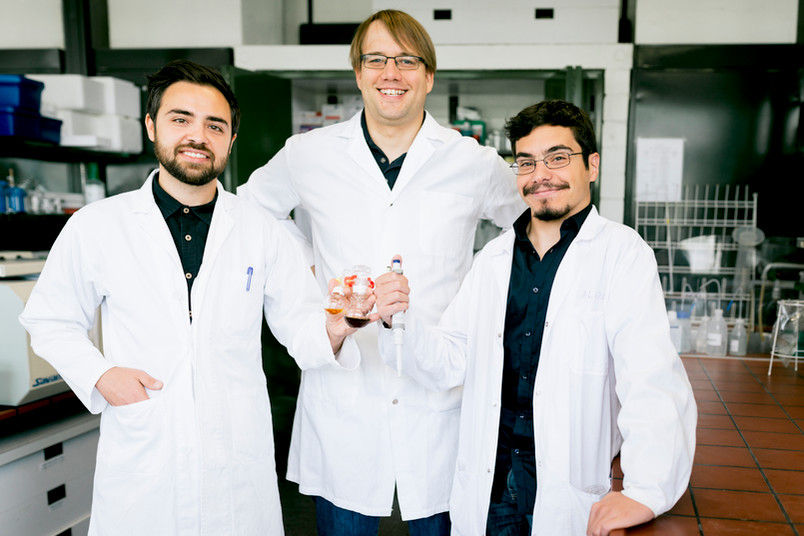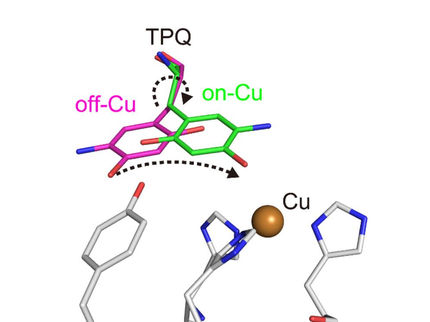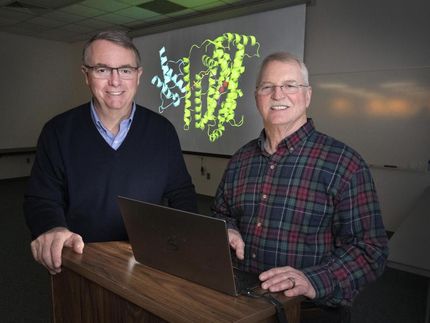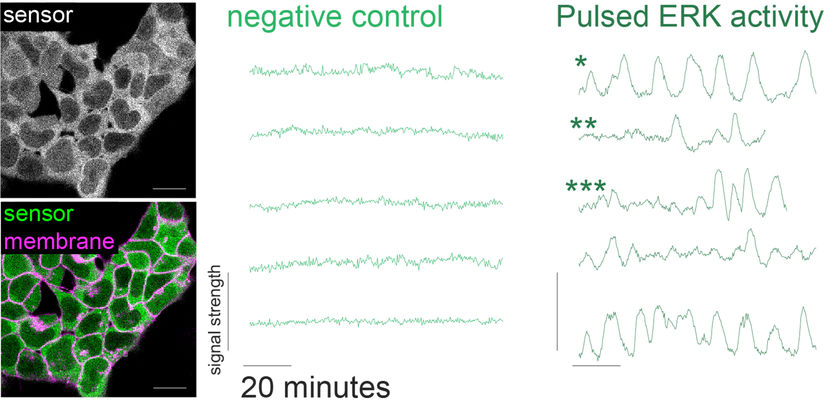Biochemistry: Combining two catalytic worlds
This is how chemical processes could become more environmentally friendly
Chemical and biological catalysts tend to require very different reaction conditions, making their combination challenging. Researchers of the Ruhr-Universität Bochum have succeeded in taking this hurdle by using a special gel matrix to compartmentalize both types of catalysts. The results obtained by the Junior Research Group for Microbial Biotechnology headed by Prof Dr Robert Kourist have been reported in the journal Angewandte Chemie.

More biology for the chemical industry – that is their aim: Dennis Reichert, Robert Kourist and Álvaro Gómez Baraibar (from left to right)
© RUB, Kramer
Benefits of enzyme catalysts
"Enzymes are environmentally friendly biological catalysts which are now in the focus of modern synthetic chemistry," says Robert Kourist. The reason: they operate under mild reaction conditions such as neutral pH and low temperatures. Also, they are very selective and manufacture only the desired product while reducing the amount of by-products.
However, there are a number of reactions, for which no suitable enzymes have been found so far. These reactions have to be performed by chemical catalysts. "A combination of the classic chemical catalysts and enzymes is a step towards more environmentally friendly chemical processes," says Kourist. "A challenge is to use them in the same reaction due to their different requirements concerning reaction conditions."
Different reaction spaces
Chemical catalysts are often organo-metallic compounds that require an organic solvent as the reaction media. However, there are only a few enzymes that can remain active in such an environment.
The Bochum-based scientists Dr Álvaro Gómez Baraibar and PhD candidate Dennis Reichert managed to encapsulate an enzyme in a special gel matrix which allowed its use in pure organic solvents. Using this strategy, they achieved the sequential combination of an enzymatic step and a chemical reaction.
Reaction cascade saves time and cost
"The combination of the individual reaction steps in a cascade has more advantages," says Reichert. It is not necessary to purify the product after each intermediate step because it can be used in the reaction directly as a raw material for the next step. This saves time and costs," he explains.
The team demonstrated this new approach with the synthesis of polyphenols. "These natural substances are used predominantly as natural antioxidants," Kourist says. "They are also at the heart of different studies as new drugs used in cancer therapies."
Synthetic manufacture of polyphenols is expensive, and the yield is low. The Bochum-based group showed that the cascade reaction can be performed successfully by the application of a gel matrix.





















































